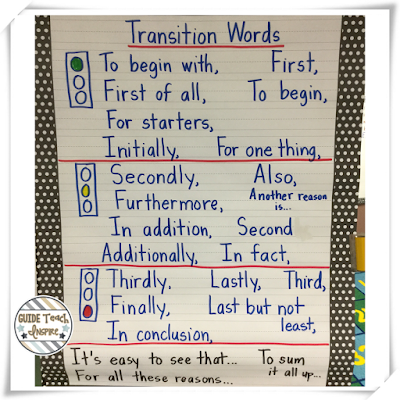I conduct small group guided reading sessions with my third graders during our intervention time.
We call our intervention time WIN (What I Need).
For the past two years, our grade level's WIN time was the last half hour of the day.
I do small group rotations (or stations) during our WIN time, and one of the rotations is a small guided reading group, which I call Book Club.
I'm sharing some info on how I conduct guided reading groups.
This is what has worked for me, and has proven to make an impact on my students' reading growth.
To me, guided reading groups are a way to target reading strategies with 4-6 students who are reading at a similar level, or working on a similar skill.
Listed below are tips for conducting guided reading lessons.
To me, guided reading groups are a way to target reading strategies with 4-6 students who are reading at a similar level, or working on a similar skill.
Listed below are tips for conducting guided reading lessons.
1. Focus on one teaching point.
I reference this resource when looking for teaching points for my groups. I have 4-6 students in each group, and they read at a similar level.
Notice that it has teaching points and discussion starters.
Here's a sample page from the section on transitional readers.
The teaching points often connect to what I have done in my whole group reading lessons earlier in the day.
I reference this resource when looking for teaching points for my groups. I have 4-6 students in each group, and they read at a similar level.
Notice that it has teaching points and discussion starters.
Here's a sample page from the section on transitional readers.
Below is a sample page of the discussion starters. There are more pages like this, and the book also includes prompts for conferring about writing, too!
The teaching points often connect to what I have done in my whole group reading lessons earlier in the day.
I am an Amazon affiliate, and receive a very small compensation if you purchase the book through the link above.
2. Begin with a warm-up of reading language word cards.
Before introducing the teaching point, I do a quick flashcard like review of common reading language words.
So, these are not phonetic words, or words related to the selected text, but words that are concept words.
I've found that reviewing these words has really made an impact on my students' achievement and understanding on tests. You can find these words in my Teachers Pay Teachers Store here.
They love going through these words, and its a way to get started while we're waiting for the stragglers to arrive at our meeting place.
This pack includes over 80 words that can be printed or used digitally on a device, like an iPad.
So, these are not phonetic words, or words related to the selected text, but words that are concept words.
I've found that reviewing these words has really made an impact on my students' achievement and understanding on tests. You can find these words in my Teachers Pay Teachers Store here.
They love going through these words, and its a way to get started while we're waiting for the stragglers to arrive at our meeting place.
This pack includes over 80 words that can be printed or used digitally on a device, like an iPad.
3. After introducing the teaching point, make sure students have time to read the provided text.
After doing a very brief intro to the book, the students have time to whisper read the book individually. As they are reading I sit across from each child, and listen to the strategies they use as they read the book.
If you had done a mini-lesson during workshop on how characters change, then you might address that same idea during your guided reading lesson.
Or, if this group struggles with identifying the setting of the story, focus on that.
The most important part of guided reading is to have students read books at their level, while practicing a skill.
After doing a very brief intro to the book, the students have time to whisper read the book individually. As they are reading I sit across from each child, and listen to the strategies they use as they read the book.
If you had done a mini-lesson during workshop on how characters change, then you might address that same idea during your guided reading lesson.
Or, if this group struggles with identifying the setting of the story, focus on that.
The most important part of guided reading is to have students read books at their level, while practicing a skill.
4. Vary the kinds of reading material.
Hopefully you have access to a wide variety of reading options at your school, or in your classroom.
If your supply is limited, you can find leveled reading materials at these awesome websites:
Newsela
Reading A- Z
Readworks
Hopefully you have access to a wide variety of reading options at your school, or in your classroom.
If your supply is limited, you can find leveled reading materials at these awesome websites:
Newsela
Reading A- Z
Readworks
5. Record the teaching points and materials you have used with each group.
You will want to collect some data on what you have worked on with your students.
You will probably impress your administrator if you kept detailed notes of your meetings with students!
Here is an example of a form I have used with students:
You will want to collect some data on what you have worked on with your students.
You will probably impress your administrator if you kept detailed notes of your meetings with students!
Here is an example of a form I have used with students:
You can find a free copy of this form by clicking here.
Please leave feedback after downloading this form. Thanks!
















































